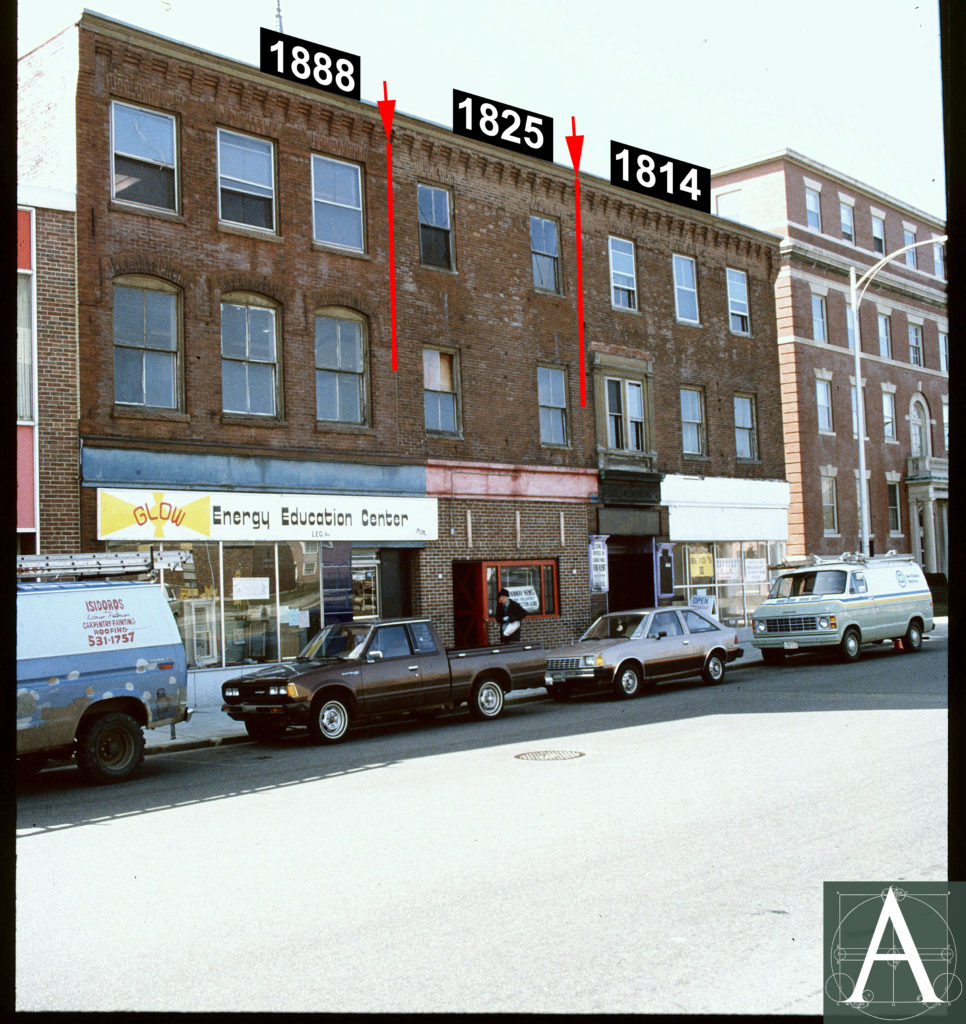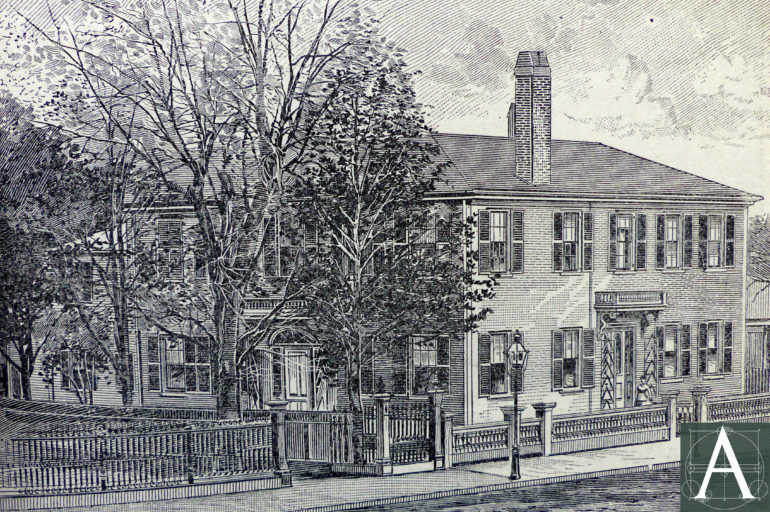The now demolished Mechanics’ Bank/Usher Block provided evidence of the initial development of a new building type (bank buildings) during the nineteenth century as well as evolving building practices throughout the mid-nineteenth century. With the chartering of the Bank of Massachusetts in 1784, private banks began to form in commercial centers to facilitate trade and the transfer of payments/credit without which merchants and manufacturers found their capital tied up for long periods of time in notes from distant buyers of goods. In 1804, a group of Lynn shoe manufacturers petitioned the Commonwealth of Massachusetts for a charter to establish a local bank, citing annual trade of $500,000 and delays in payment that created need for “a bank to discount notes” and “extend credit on the security of the paper from Southern buyers.” The Legislature concluded that sufficient banks existed in nearby towns and denied the petition. In 1814, the petition was resubmitted and the Lynn Mechanics’ Bank was established.
In March, 1814, the bank’s directors purchased land on South Common Street from Daniel Lindsey, a local cordwainer and, by mid-April, had hired Timothy Munro to build a brick building for $1,625. As the result of two attempted nighttime robberies in April and June, 1825, directors of the bank bought an adjacent parcel in order to build a two-storey house in which the bank’s cashier could live as a deterrent to future robbers. The new house was constructed of brick at a cost of $2,062 with an additional charge of $52.50 to face the façade (north elevation) with pressed brick laid in stretcher bond. The building’s genteel scale reflected both the ambitions of the bank and the middle-class standing of its cashier; it contained a one-room deep floor plan with a central hallway flanked by one square room on each side at both the first and second storeys. A kitchen/service ell with lower stud height extended southward away from the street on the south elevation of the house.
Following its organization in 1826, The Lynn Institution for Savings occupied space in the Mechanics’ Bank until 1835 when both banks moved to a new building on Broad Street. After 1835 the former bank building was occupied as a residence by two physicians in sequence, William Prescott (1835-1845) and Peter Renton (1845-1864), after which it was sold to Roland G. Usher, who occupied the house during his time as Mayor of Lynn (1866-1869). In 1888, Usher commissioned the lifting of the house and its enlargement as a commercial block.

Usher Block façade, 1978: vertical joints between the different sections of the building as completed in 1888
READ MORE on Lynn Mechanics’ Bank/Usher Block

